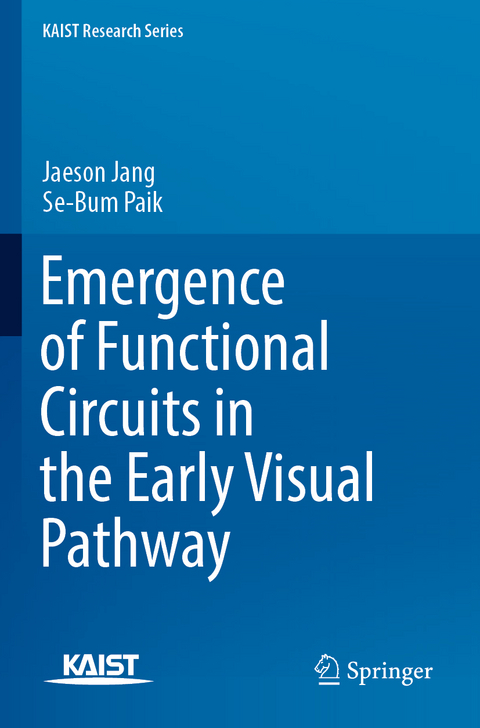
Emergence of Functional Circuits in the Early Visual Pathway
Springer Verlag, Singapore
978-981-19-0033-4 (ISBN)
Dr. Jaeson Jang studied bio-engineering and mathematical sciences at Korea Advanced Institute of Science and Technology (KAIST) and graduated in 2013. He remained there for his graduate studies, working under the supervision of Prof. Se-Bum Paik on computational neuroscience. During his doctorate, he proposed how the emergence of diverse functional circuits in the primary visual cortex could be initiated by the feedforward visual inputs from the retina, even without any further development of recurrent cortical circuits. Furthermore, he applied a similar notion to the deep learning and showed that various functional units spontaneously arise from the statistical variation in randomly initialized neural networks, even in the complete absence of learning. He completed his doctoral research in 2020 and embarked on a research project in the diagnosis of mental disorders at Looxid Labs, a start-up that develops recording devices for brain signals in VR. Dr. Se-Bum Paik is the associate professor in the Department of Bio and Brain Engineering at Korea Advanced Institute of Science and Technology (KAIST) and is the head of the Visual System Neural Network Laboratory. After receiving his B.S in Nuclear Engineering and Physics from Seoul National University and M.S. in Physics from Seoul National University, Dr. Paik obtained his Ph.D. in Physics from the University of California at Berkeley. Dr. Paik’s research has focused on finding a theory that explains how the architecture of the visual system is initially created to generate the building blocks of the visual information process. Dr. Paik introduced the Paik-Ringach model, arguably the most plausible theory of the origin of functional maps in the visual cortex, and his developmental models lay the groundwork for a unified theory of the origin of fundamental functions in the brain. Currently, Dr. Paik is on the board of directors of both the Society for Computational Neuroscience and the Brain Engineering Society of Korea.
Introduction.- Topographical consistency of cortical maps.- Orthogonal organization of visual cortex.- Parametric classifications of cortical organization.- Discussion: Biological plausibility of the model.
| Erscheinungsdatum | 03.05.2023 |
|---|---|
| Reihe/Serie | KAIST Research Series |
| Zusatzinfo | 58 Illustrations, color; 8 Illustrations, black and white; XXII, 121 p. 66 illus., 58 illus. in color. |
| Verlagsort | Singapore |
| Sprache | englisch |
| Maße | 155 x 235 mm |
| Themenwelt | Geisteswissenschaften ► Psychologie ► Allgemeine Psychologie |
| Geisteswissenschaften ► Psychologie ► Verhaltenstherapie | |
| Medizin / Pharmazie ► Physiotherapie / Ergotherapie ► Orthopädie | |
| Naturwissenschaften ► Biologie ► Humanbiologie | |
| Naturwissenschaften ► Biologie ► Zoologie | |
| Technik ► Medizintechnik | |
| ISBN-10 | 981-19-0033-7 / 9811900337 |
| ISBN-13 | 978-981-19-0033-4 / 9789811900334 |
| Zustand | Neuware |
| Informationen gemäß Produktsicherheitsverordnung (GPSR) | |
| Haben Sie eine Frage zum Produkt? |
aus dem Bereich


